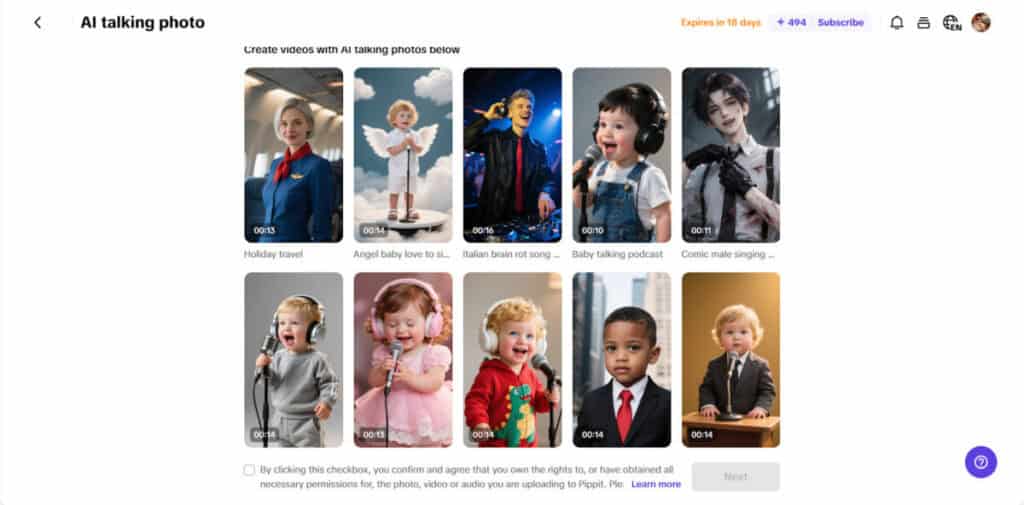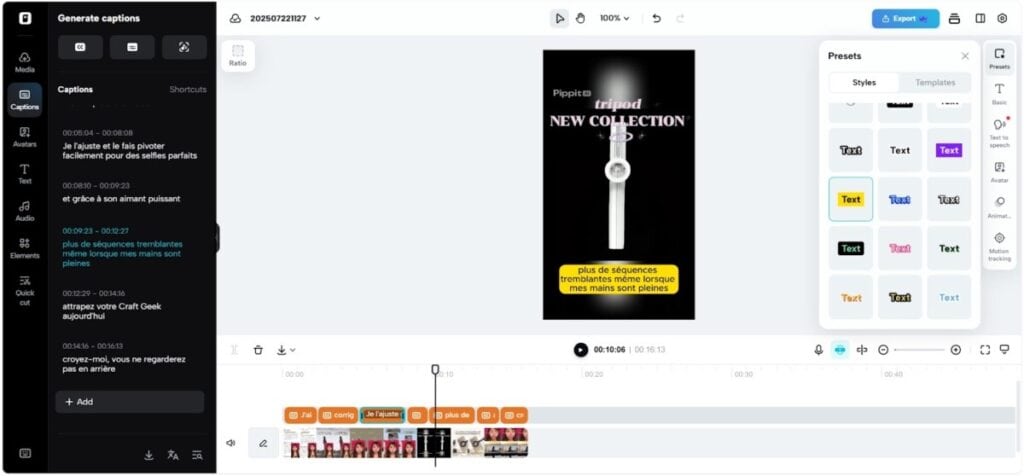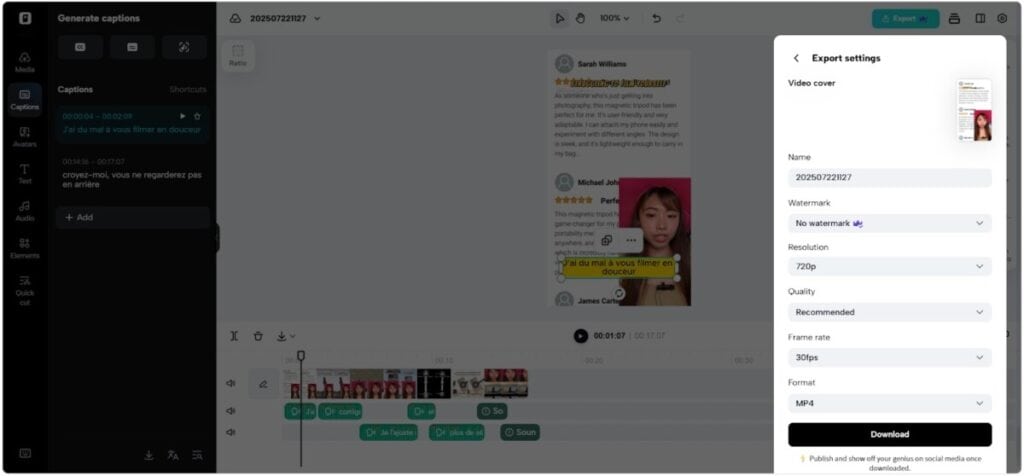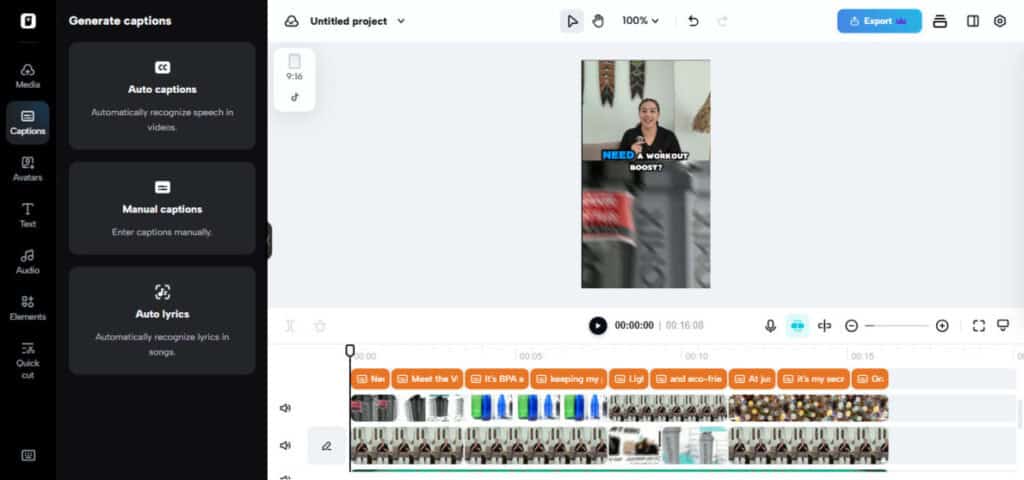
A caption can accomplish more than covering speech, especially in the speedy world of brief video. It establishes the mood. But when the mood doesn’t transfer between cultures? Let’s say you’re adding a crying face emoji to emphasize how funny a moment is. In your culture, that means ‘I’m laughing so hard I’m crying.” But in someone else’s, it may look like deep sadness. Just like that, the viewer misunderstands your joke. This is the issue of using too much symbolism, slang, and gestures in video captions without considering who’s viewing.
That’s where Pippit steps in, a video editing platform that not only accommodates rich visuals, but also corrects, culturally-sensitive subtitle personalization. If you’re using AI photo to video tools to make content from the ground up or editing a pre-existing clip, Pippit assists in ensuring your message remains clear, whoever might hear it.

Why Emojis and Slang Can Mislead Viewers
Visual and verbal shorthand, such as emojis and slang, often seems like a shortcut to universal communication. However, this assumption is flawed. What a creator intends to convey with a simple emoji or a popular slang term can be completely misunderstood by a viewer from a different cultural background. These misunderstandings aren’t just minor miscommunications; they can fundamentally change the emotional tone and meaning of your content, especially when it’s translated. This is why emojis and slang can mislead viewers:
Cultural Context is King
A gesture or symbol that is perfectly normal and positive in one country can be highly offensive in another. For instance, the ‘thumbs-up’ sign, a gesture of approval in many Western cultures, is considered rude and insulting in parts of the Middle East. Similarly, the ‘peace’ sign made with the palm facing inward is an insult in some places. The same applies to emojis. An emoji like a hand gesture may have a direct real-life equivalent with a different meaning elsewhere.
Linguistic and Dialectal Differences
Slang is by its very nature a localized, informal language. A term like ‘dead‘ can mean “tired” or “hilarious” in one dialect of English but be taken literally in another. A creator using slang to express a joke or a specific emotion might find that their international audience misses the nuance entirely. When captions are machine-translated, these issues are compounded. The translation software may not be programmed to recognize the slang and could translate it literally, leading to an entirely different, and often nonsensical, result.
Generational Gaps
The meaning of a symbol or phrase can shift dramatically between generations. A smiley face emoji 🙂, once a straightforward symbol of happiness, can now be interpreted as sarcasm, condescension, or even passive-aggressiveness depending on the context and who is sending it. Young people often develop their own sub-cultural slang and emoji usage that may be completely foreign to an older audience. This generational gap can lead to creators inadvertently alienating or confusing parts of their viewership.
These mismatches can warp your content’s emotional meaning, particularly when your captions are machine-translated. Slang, local jokes, and culturally based gestures don’t necessarily translate between languages, or even between dialects. This complicates each creator’s task: it’s not only what you say, but how your reader interprets it.
From Local Message to Global Misread: What Goes Wrong
Let’s say this happens: You’ve inserted quick-paced captions to a tutorial. You include slang and emotive icons to make it engaging. Now, someone half a globe away watches with translated subtitles, and your message becomes stilted, ambiguous, or even offensive. This isn’t a language problem; it’s a tone problem.
This is where it comes in handy to realize that translation isn’t a matter of word-for-word precision. It’s a matter of emotional clarity. And to deliver that, creators require tools that are more than mere auto-captioning. Before we dive into how you can do this correctly, remember the benefit of utilizing a free online video language translator, which is designed expressly for creators, not merely general text.
Translating Tone: Avoid Cultural Miscommunication With Pippit
Here’s how you can skip the miscommunication pitfalls of cultural miscommunication in three easy steps:
Step 1: Open Video Generator and Quick Cut
Start by logging into your workspace and heading to the Video Generator. From the left-hand menu, choose Quick Cut to load the editing studio. This is where all your language magic begins.

Step 2: Add Your Video, Then Auto-Caption and Translate
Upload your video file and let Pippit do the heavy lifting. Click Auto Captions to instantly generate subtitles, then hit Translate to convert them into your desired language. It’s fast, clean, and ready for voice.

Step 3: Text-to-Speech, Audio Cleanup, and Export
Now click Text to Speech and select Apply to All so every translated line is given voice.

Head to the audio section, separate the original audio, and delete it to avoid overlap. Once your new multilingual version is ready, just hit Export to download or share it with the world.

Why Does This Matter to Creators and Brands Alike
A single confusing caption can ruin your marketing message if you promote a product or establish a personal brand. Using an informal tone or visual slang without caution is damaging to both engagement and, therefore, to trust. Picture having a campaign for launching a product in a fresh market and having its catchphrase incorrectly translated.
Even with workflow-easing tools like Pippit, there’s still worth in being considerate. Particularly when working on videos for ads or collaborations, where tone accuracy matters most. That’s where Pippit’s accuracy shines through. It marries the visual strength of a contemporary ad maker with the subtle controls you require in order to localize tone.

The Final Word: Clarity Wins Views
Short-form content culture is loud. To be heard, your videos don’t simply have to be pretty; they have to feel right, globally. That’s why subtitles and captions should get as much creative love as everything else, from images and audio to dance and styling. Pippit makes it possible, putting creators in complete charge of language, emotion, and style in each frame.
From photo to video production to tone-accurate multilingual subtitles, Pippit assists you in crafting videos that resonate. Try Pippit today and ensure every caption conveys exactly what you intend, regardless of who’s listening.
Suggested articles:
- Running Multiple Meta, Google, and TikTok Ad Accounts Safely with VMLogin
- Best Practices, Metrics, and Benefits of Social Media Monitoring
- When to Hire a Social Media Manager (And What to Expect)
Daniel Raymond, a project manager with over 20 years of experience, is the former CEO of a successful software company called Websystems. With a strong background in managing complex projects, he applied his expertise to develop AceProject.com and Bridge24.com, innovative project management tools designed to streamline processes and improve productivity. Throughout his career, Daniel has consistently demonstrated a commitment to excellence and a passion for empowering teams to achieve their goals.